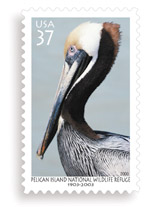
Number 4
Summer 2003
 |
Volume 20
Number 4 Summer 2003 |
|
Departments:
Campus Views | Letters
| News & Notes | Parents
| Class
Notes | Aggies Remember
| End Notes
|
INSIDE TRASH TV
Yes, it’s trash TV—daytime television talk shows that revel in the worst the human experience has to offer. Why do they do it—the producers, the hosts and, most surprisingly, the guests? Laura Grindstaff, UC Davis assistant professor of sociology, spent several years finding out. Grindstaff interviewed more than 80 participants, attended live tapings and worked as an intern at two nationally televised talk shows: one that she characterizes as “trashy”—a show like “Jerry Springer”—and the other “classy”—a show like “Oprah.” (To protect the anonymity of their staff members, she doesn’t name the shows.) She learned about how and why producers elicit tears, shouting matches and fistfights from their guests, why the guests agree to participate and the supporting roles played by the audiences and the experts. She also learned much about what these shows say about the mass media and American society and culture in general. Grindstaff shares her findings in a book, The Money Shot: Trash, Class, and the Making of TV Talk Shows. Key to a talk show’s success, Grindstaff found, is that moment of conflict, the dramatic climax when guests lose control emotionally or physically—what she calls the “money shot,” borrowing a term from pornography for another kind of climax. Topics and guests are chosen, shows structured and guests prepared to maximize these emotional climaxes. And guests are prepared to deliver, Grindstaff said. “Most do know in a general sense what they’re getting into.” They have seen the shows, and they know what’s expected. But why do they do it? The classy reasons, Grindstaff found, are to champion a cause or educate the public. Trashy reasons include the excitement of being on TV, the free trip to the city, revenge, attention and public validation. “Everybody wants to feel that what they do matters,” said Grindstaff. “They want validation, and media coverage is a very powerful form of validation in our culture.” Though the producers may get what they want and the guests often do, too, the unbridled excess isn’t without victims. These shows perpetuate a vulgar and tasteless stereotype about the poor and working-class people, Grindstaff points out. “It’s a vicious image of these people in our culture, and one that goes unchallenged.” But she doesn’t just blame the media. “We could take the media to task for turning everyday lives into circus sideshows, but we must also blame the society that gives this class of people few other outlets for being seen and heard.”
LEAVING HIS STAMP Professor James Brandt’s specialty is helping people see—both as an ophthalmologist and director of the UC Davis Medical Center glaucoma service and as a photographer, providing an up-close look at nature’s wonders. Those wonders include this brown pelican that now graces a new postage stamp, issued in March to commemorate the centennial of the nation’s first wildlife refuge, Pelican Island National Wildlife Refuge in Sebastian, Fla. Professor James Brandt’s specialty is helping people see—both as an ophthalmologist and director of the UC Davis Medical Center glaucoma service and as a photographer, providing an up-close look at nature’s wonders. Those wonders include this brown pelican that now graces a new postage stamp, issued in March to commemorate the centennial of the nation’s first wildlife refuge, Pelican Island National Wildlife Refuge in Sebastian, Fla.
Brandt, who took the photograph two years ago while he was attending an ophthalmology meeting in the state, began exhibiting his work in galleries in the 1970s, in part to support his college and medical school education. Over the years, his photographs have appeared in National Geographic World, Encyclopedia Britannica, World Book, Encarta and on book covers. “Professors like to think that they’ll be remembered for their academic work,” said Brandt, “but the reality is that for most of us, our work will be forgotten in a few decades. It’s an honor to know that an image I created will be in people’s stamp collections for centuries.”
NAMESAKES: ROESSLER HALL
|
||
|
This Issue | Past Issues | Magazine Home | Search Class Notes | Send a Letter |